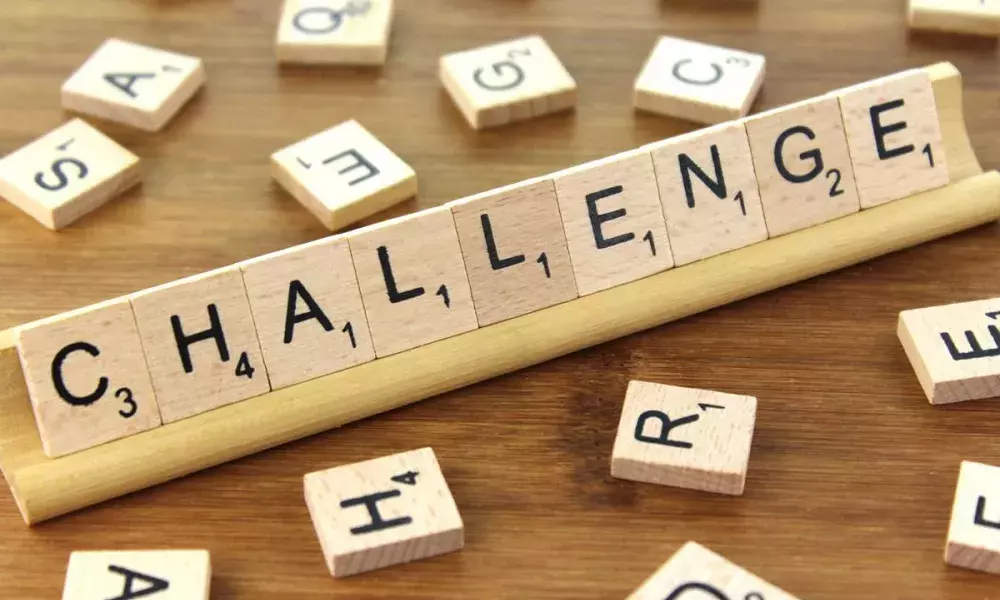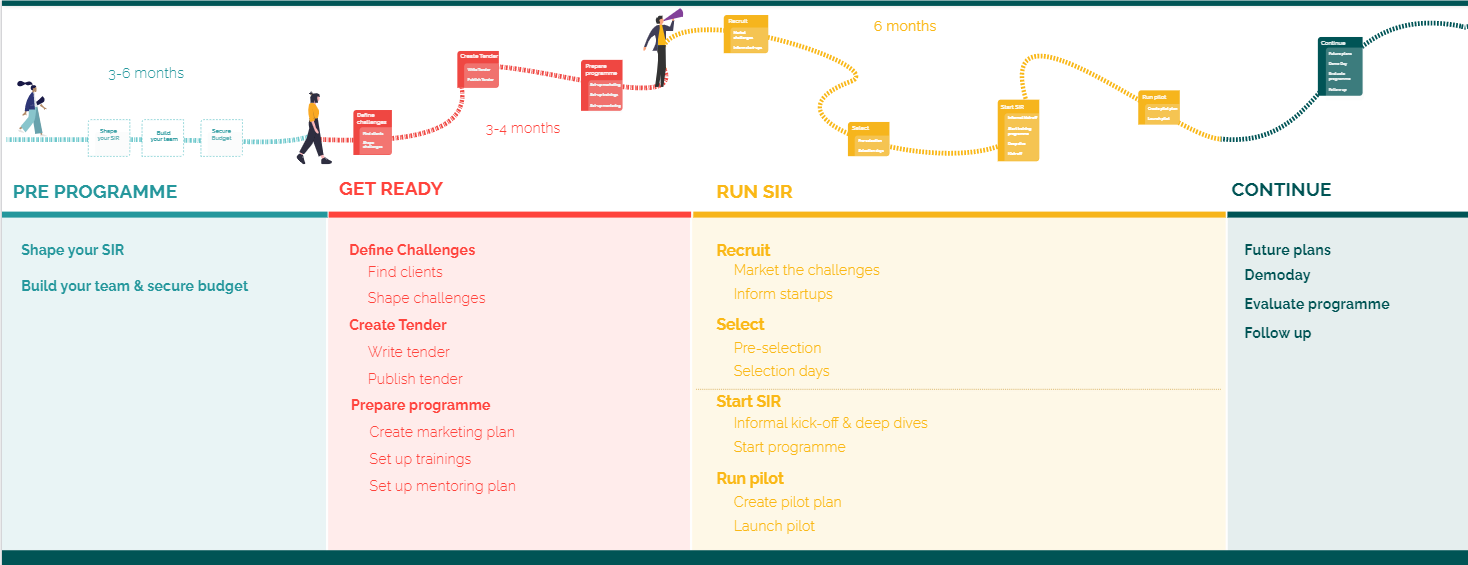
Challenge-based procurement
The heart of the DIACCESS project in Växjö is to run a series of innovative public procurement (IPP) processes/rounds, in which companies will co-create a solution (with a strong digital content) for an urban challenge or problem. This will hopefully speed up digital innovation in the public sector, and also helps companies to explore new markets and create jobs.
One of the key assumptions in the project is that city departments will come up with challenges, that can then be tackled by companies via an IPP process. In practice, this proves not that easy however. So far, some urban challenges have been defined, but the process is more difficult than expected, according to project leader Andrea Swedenborg. First of all, of course, there is the COVID pandemic, that makes that city departments have many other problems to solve in their existing operations, and have perhaps less time to reflect about new innovation challenges. But apart from that, the city administration does not yet have a culture of thinking in terms of challenges.
One of Europe’s more experienced cities in this respect is Amsterdam. Back in 2015, it created a special programme to discover urban challenges, and then asked start-up companies to come up with solutions via a special public procurement programme. Now, six years later, the programme has become mainstream, and has been replicated by many other cities and public organisations in the Netherlands.
Could Växjö learn something from this experience? To find that out, this autumn, the Växjö team will visit Amsterdam. The most pressing question will be: how to convince, seduce and support leaders in public administration to identify urban challenges and work with companies to solve them?
Start-up in Residence Amsterdam
The Startup-in-Residence programme (SiR) in Amsterdam is an innovatve approach to connect start-ups to urban challenges. It was launched in 2015 by the Chief Technology Office (CTO) of the City of Amsterdam. In the programme, startups (from the Netherlands and beyond) are invited to turn their ideas and/or prototypes into innovative solutions to manifold city challenges during a 5-month “in-residence” period, working with different City departments. Like in Växjö’s Diaccess project, the underlying idea was that this would not only lead to better urban solutions, but also help to grow a new generation of innovative companies, that could sell their new solutions also elsewhere.
The SiR programme is charged with the following tasks:
i) collecting and (re-) defining relevant challenges from the City departments;
ii) organising a competitive process in which startups could bid to develop solutions and;
iii) actively supporting the (single) selected startup for each challenge to co-develop and implement its proposed solution in connection with the relevant department.
By doing so, SiR aimed at developing better solutions for city problems while promoting the local startups scene (e.g. giving startups a head start by becoming a launching customer) and infusing the public administration with innovation and startup culture. Since the beginning, there have been 6 rounds; in total, 92 challenges have been addressed.

Source: the City of Amsterdam
Examples of previous challenges to be tackled by start-ups:
● Develop circular textile products that match the procurement needs of the City in the coming four years.
● Develop a sustainable, challenge owners-friendly, financially attractive and scalable charging solution for electric pleasure craft that can preferably be tested and realised before summer 2021.
● Devise and bring to life a ‘helping hand’ digital platform that connects people with restricted access or a disability to random ‘helping hand’ passengers in the Amsterdam Area in public transport.
● Develop a waterborne charging solution for commercial electric cargo vessels.
Doing it: a practical manual
Based on their 5 years of experience, the SiR team created a practical manual that outlines how cities can set up a similar programme. Four steps are discerned: Pre-programme, get ready, run SIR and Continue. The manual can be found here: https://startupinresidence.com/media/2020/10/SIR-Toolkit-English-copy2-2.pdf

Source: https://startupinresidence.com/media/2020/10/SIR-Toolkit-English-copy2-2.pdf
Defining the challenges
For most city departments, it is not common to work with startups. Most of their contracts are with established, larger companies. A first key challenge of the SiR programme was to convince leaders in various city departments that working with startups could bring added value, in the sense of new solutions, but also of “contagion” with the more innovative and agile culture of startups. There was a lot of skepticism (“will this really work?” and “it will take me a lot of time and effort”), and also, the programme was largely unknown by most civil officers.
An internal campaign was launched to raise awareness of the programme within the municipality, and the programme leader of SiR put a lot of effort to talk personally to representatives of various departments. In the first round of SiR (2015), it turned out that there was considerable interest to work with SiR, but also that the definition of the urban challenge to be addressed was not always easy for city departments themselves. Therefore, the leader of the SiR programme put a lot of efforts and time to help them (re-)formulate challenges that were open enough to let room for startups to innovate, but also not too vague, and of such a scale and magnitude that it could be realistically expected that startups could deliver added value. After the first quite successful run of SiR in 2015, the programme became more known in the municipal organisation, and in the rounds that came later, the number of submitted challenges increased because the programme was better known among civil officers and they started to see results. Also, it became kind of “cool” to participate in it.
An important part of the programme’s impact is the qualitative change it brings about within the municipal organisation. Participation in the SIR programme stimulates civil servants to approach their challenges in an innovative and sometimes completely different way. It helps them to sharpen their needs, identify the main features the solution requires, and experience the “build-measure-learn” approach in practice.
Lessons?
At least two lessons can be drawn from this.
One: city departments will not come up with challenges easily. A lot of personal, face-to-face effort is needed to put them over the line. And then, they need a lot of coaching too, because formulating an urban challenge that can be tackled by companies is not straightforward.
Lesson two: success breeds success. When it becomes clear in the municipality that this programme works, others will join the bandwagon, happy to join such an innovative journey.
In Växjö, the IPP approach has just started, and the DIACCESS project was faced with a pandemic that made everything much more difficult. Thus, the start-up problems are only natural. The Amsterdam example shows that the start is the most difficult, and that a cultural change takes time. The study visit to Amsterdam will hopefully bring inspiration, and further build the learning community of European cities that believe that innovative public procurement is the way forward.
About this resource
The Urban Innovative Actions (UIA) is a European Union initiative that provided funding to urban areas across Europe to test new and unproven solutions to urban challenges. The initiative had a total ERDF budget of €372 million for 2014-2020.
Similar content




